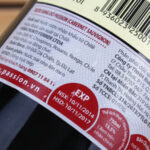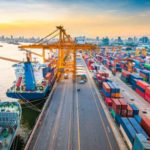What documents are required for customs procedures for processed goods? Where are the customs procedures for processed goods carried out? These are the basic questions that many people wonder about. So, follow this detailed article about customs procedures for processed goods.
1 Documents to Prepare
 Documents to be Prepared
Documents to be Prepared
– Documents to be prepared to carry out customs procedures for processed goods:
+ Export and import customs declaration.
+ According to Article 24 of the Law on Customs, accompanying documents to the declaration (in electronic or paper form)
– Number of dossiers: 01 copy in paper or electronic form.
2 Customs Procedures and Process for Processed Goods
 Procedures and Process
Procedures and Process
The customs procedures and process for processed goods consist of the following steps:
Step 1: Notify the Processing Contract
To notify the processing contract to the customs officer, you need to prepare the following documents:
– Processing contract and contract appendices, if any.
– Business registration certificate.
– Tax code registration certificate.
Next, the customs officer will receive, check the completeness, synchronization, and legality of the processing contract; assign a contract receipt number, and clearly state the date of receipt.
Step 2: Declare the Norms
The processing norms include:
– Norms for raw material usage refer to the necessary and actual amount of raw materials used to produce one unit of the product.
– Norms for consumable usage refer to the actual amount consumed to produce one unit of the product.
– The ratio of raw material or consumable loss is the actual loss of raw materials or consumables, including natural losses, losses due to the creation of scrap and defective products, calculated as a percentage of actual production norms or compared to raw material usage norms or consumable usage norms.
– Before production, the organization must establish expected usage norms and loss ratios for each product code.
– The representative of the individual or organization must take responsibility for the accuracy of the usage norms.
– The processing merchant needs to notify the norms, raw material codes, technical parameters, etc.
Step 3: Import Raw Materials
 Import
Import
To import raw materials, follow these steps:
– Receive, register, and channel the declaration.
– Check the customs dossier.
– Inspect the goods.
– Pay customs duties and fees.
– Manage and complete the dossier.
Step 4: Export Finished Products
– Manage and complete the dossier.
– Pay customs duties and fees.
– Inspect the goods.
– Check the customs dossier.
– Receive, register, and channel the declaration.
Step 5: Settle the Processing Contract
– First, submit a complete and valid settlement dossier:
+ Application for settlement.
+ Summary table of imported raw materials and consumables.
+ Summary table of processed products.
– Next, make a settlement decision:
+ Receive the settlement dossier.
+ Check the completeness and validity of the settlement dossier.
+ Make a decision to settle the processing contract
– Fee: VND 20,000 according to Circular No. 172/2010/TT-BTC
– Time limit for settlement:
+ Within 08 working hours for the form of partial physical inspection of goods according to probability.
+ Within 02 working days for the form of physical inspection of the entire lot.
+ In case the form of physical inspection of the entire lot is applied, and the exported and imported goods are large in quantity and complicated to inspect, the inspection time can be extended but not exceeding 08 working hours.
3 Location for Customs Procedures for Processed Goods
 Location for Customs Procedures for Processed Goods
Location for Customs Procedures for Processed Goods
For Export Procedures
For goods that are processed products, organizations and individuals can choose to carry out procedures at a convenient Customs Branch.
For Import Procedures
– For goods that are raw materials, consumables, machinery, and equipment imported for processing, organizations and individuals can choose to carry out import procedures at one of the following Customs Branches:
+ Customs Branch where the organization or individual has its head office or branch office or production facility;
+ Customs Branch at the export-import port established in the inland;
+ Customs Branch managing processed goods under the Department of Customs where the production facility or import gate is located.
4 Agency Implementing Customs Administrative Procedures
 Agency Implementing Customs Administrative Procedures
Agency Implementing Customs Administrative Procedures
– Authorized agency:
+ Receive, check the conditions for registration of declaration, registration, and channeling of declaration: General Department of Customs, Provincial/City Customs Department.
+ Check paper dossiers, inspect goods: Customs Branch
– Agency or individual authorized or assigned to perform (if any): Customs Branch.
– Directly performing agency:
+ Receive, check the conditions for registration of declaration, registration, and channeling of declaration: General Department of Customs, Provincial/City Customs Department;
+ Check paper dossiers, inspect goods: Customs Branch
– Coordinating agency (if any): None.
We have sent you the above information. For more details, please follow this article!
Customs Clearance Procedures: A Comprehensive Guide to Importing Goods
Do you know the ins and outs of customs procedures and the fundamental process of importing goods? Well, you’ve come to the right place! Our expert guide delves into the intricacies of customs clearance, offering a comprehensive insight into the world of international trade. Get ready to navigate the complex world of customs with ease!
“A Comprehensive Guide to Importing Goods from China to Vietnam”
Introducing the ultimate guide to navigating the complex world of importing goods from China to Vietnam. Unravel the mysteries of cross-border trade with our comprehensive step-by-step process, empowering you to expand your business horizons with ease and efficiency. Discover the secrets to seamless importing, ensuring your venture is a resounding success.














